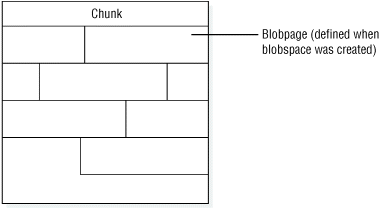Blobpages
A blobpage is the unit of disk-space allocation that the database server uses to store simple large objects (TEXT or BYTE data) within a blobspace.

For information about how HCL OneDB™ structures data stored in a blobpage, see structure of a blobspace blobpage in the disk structures and storage topics of the HCL OneDB Administrator's Reference.

Instead of storing simple-large-object data in a blobspace, you can choose to store it in a dbspace. However, for a simple large object larger than two pages, performance improves when you store it in a blobspace. Simple large objects stored in a dbspace can share a page, but simple large objects stored in a blobspace do not share pages.
For information about how to determine the size of a blobpage, see Determine blobpage size. For a description of blobspaces, see Blobspaces.